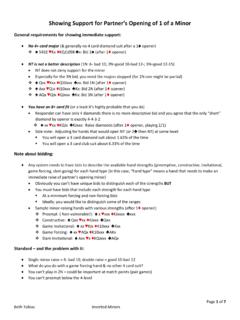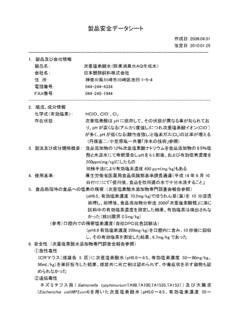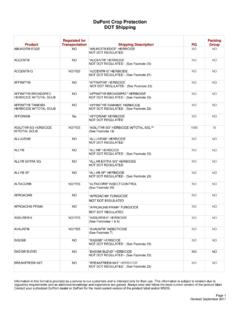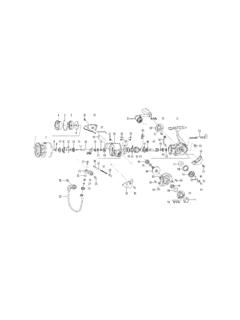Transcription of When and How to Finesse - Austin Area Bridge
1 when and How to Finesse Paul Tobias 12/7/201311 and 10 Card Fit missing only the K Rule: With only 2 missing it is better to play to the A, hoping they split and the K drops (unless the off-sidesopponent has shown a very long suit then Finesse ). Rule: With 3 to the K missing it is almost always better to Finesse . If also missing the 10, it may matter how you Finesse see following hand: N AQ972 W E S J8543 Odds strongly favor a Finesse , so you should not play to theA unless you have a very good reason to suspect a singleton K in East s hand (hopefully other than peeking or a dropped card!). So you are finessing but don t carelessly lead to the Q!
2 Lead the J and, if covered and East shows out, you go back to your hand and Finesse the 10. That way you pick up a K10x on-sides without a loser. There is no downside to leading the J it 1can never cost and it wins when K10x is on-sides. If you lead to the Q, you lose a trick when K10x are the K and the 10 With a 9 Card Fit N AQ972 W E S J854 Now, surprisingly, it is no longer correct to lead the J. Youshould play to the Q and, if the 10 drops from East, go backto your hand and Finesse again. If East follows low to thefirst lead, after winning the Q Play the A. Your chance ofsuccess is 33%. Leading the J loses when there is asingleton K in West s hand, which does not happen whenyou lead low to the the K and the 10 With an 8 Card Fit N AQ97 W E S J8542 Now, again surprisingly, it is once more right to lead the Jand, if covered by the K, go back to your hand and lead tothe 9 in dummy.
3 This gives you about a 27% chance of 4tricks but that s the best you can or 9 Card Fits missing only the QWhen playing a suit with 8 or 9 cards in the two hands missing the Q, the old Bridge adage 8 ever, 9 never is easy to remember and close to accurate a better version would be 8 ever, 9 hardly ever . First we look at 9 card fits. AJ10xx KxxxRule: Play the K and if both follow, next play the A. This wins significantly more often than finessing after playing the K but if you know one of the opponents has one or two very long suits (because of a pre-empt or Michaels orUnusual NT bid, say, or a bid and rebid of a suit) then the odds shift enough so that it is right to Finesse the other player on the second round of the suit).With 8 cards in the two hands, play the A or K and then Finesse for the Q.
4 AJ10x K9xxRule: Decide who you want to Finesse for the Q and play the high honor in the hand in front of that player. Next, 3finesse for the missing Q. This is much better than playing the A and then the K (hoping the Q will drop). Note: when you have an 8 card fit and can Finesse either opponent for the Q pick an opponent to Finesse and first play your ace or king, then Finesse . If you have AJ10 opposite K9xxx and know nothing about which opponent to Finesse , play the A first, then Finesse the J that way you can pick up 4 to theQ. In general, play from the shorter suit, if 5-3, so you can pick up 4 to the Q on-sides. Exceptions: when you are almost certain that one defender has a long trump suit you may have to take a first round Finesse if that defender is in front of the 3 card Card Fits Missing the Jack Here are three typical examples: AQ10x KQ10xx AKQ10x Kxx Ax xx In the first, you play the A, then the K and lead to the Q10.
5 In the second you play the A and lead to the KQ10x. In the third you could play the A and go to the other hand and lead towards the KQ10x. The question is whether to Finesse the 10 or play for the drop. You may know that a 4-2 split is more likely than a 3-3 split (very true). But, in all of these cases it is best to not Finesse and instead to play the high cards hoping to drop the : with 7 cards, missing only the jack (and no reason to strongly suspect one opponent is very short in the suit) youshould play the high cards instead if finessing. Missing The KQ or QJ or KJ1. Missing the KQ with AJ10 in one hand. AJ10(xx) xx(xx)First lead to the 10 and, if it loses to the K or Q, next lead to the J. Do this even if you have 9 cards in the Missing the QJ with 9 cards in the suit.
6 A10xxx KxxxPlay the K and, if the J or Q falls on your right, next Finesse the 10. Otherwise, play the A Missing the QJ with 8 cards in the suit. A109x Kxxx5 Play the K and next play to the 9 regardless of whether a small card or the J or Q falls on the right (safety play).4. Missing the K and J with 9 cards. AQ10xx xxxxPlay low to Q. If it loses, next play to the A. 5. Missing the K and J with 8 or fewer cards. With cards as in 4, but 8 or fewer of them, play low to 10 and, if it loses to the J, next time Finesse the Principle of Restricted Choice in BridgeMissing the QJ with 9 cards in the suit, we learned it was best to Finesse on the second lead of the suit if an honor fell, instead of playing a top honor.
7 This seems to contradict standard advice to play the A and the K when you have 9 in the suit. Why is it suddenly correct to Finesse after the player on the right shows one of the 2 missing (touching) honors on the first lead of the suit? The same was true when we held 9 cards missing the K and Q and you led to the AJ10(xx) and lost the Finesse to the Q. Why is finessing again correct instead of playing for the drop?6 The Principle of Restricted Choice states that when a player plays one of two touching honors from a holding that could be either both honors (and no other cards left in that suit) or just that honor (and no other cards in the suit), assume he had no choice but to play the precise card he did (in other words, assume he had just one of the two missing honors, not both). He played the card he did because his choice was restricted - in other words, he had no other : We are assuming that with doubleton QJ or KQ, thedefender will mentally toss a coin and pick one to play, rather than always false carding with the higher one or always playing the lower one the random play strategy is the best one for a defender to use so, unless you knowotherwise, assume it is the s an example: AQ9x KxxHere, you play the A and then the K.
8 If the J or 10 falls on the right, assume that hand does not have the other missing honor and Finesse the 9 look at these two suit holdings: a) AKQ9xx b) KQ9xxx xx Ax 7 Assume you play the A from dummy in a) and East (yourright hand opponent plays the 10 or the J. In b), assumeyou lead to the A and East plays the 10 or J. Should younext Finesse the 9? In other words, is this a situationwhere you should apply the Principle of RestrictedChoice? The answer is NO! East could have J10x and bemaking a good false card! East is not restricted to eitherhaving just the card played or the J10. He can have othercards like the J10x and be false carding. Note: when you are sitting East, the J or 10 is a goodfalse card because it cannot cost and it gives declarera choice and a chance to go wrong!
9 The same situationholds when declarer has an 8 card trump holdingmissing the Q and you are behind the KJxx with the 10xand declarer plays the A. If you play low, declarer willcertainly Finesse your partner s Q. False card the 10and declarer may think restricted choice applies andyou have either the singleton 10 or the Q10 (yourchoice is restricted in both cases) and the doubleton Qis slightly more likely, so he may play for the drop!Playing Suits missing most of the top honorsWe next look at how to play several fairly common suit cardcombinations when you need (want!) the maximum numberof tricks possible even if the odds are against shown involve missing many of the top honors -some of these are rarely treated in Bridge books and oftenmisplayed at the table. While the topic is advanced, playingthese combinations correctly will increase your bridgesuccess (and you will also feel great when it works!)
10 8 The common theme is: Picture the most likelyopponent card holdings (based on bidding, play andbridge probabilities) and then play the suit to maximizeyour success If a likely holding gives you no chance,then play for less likely holdings that do allow many of the examples a secondary theme is: Whenmissing many of the top honors it is very often correctto lead so that the opponent you think is most likely tohave an honor doubleton plays second there arecases when this does not apply but it is correct oftenenough that it is a good rule to rememberAll examples assume we have no entry problems to get toeither hand. In all cases we are playing the best waypossible to get the maximum possible tricks we do notconsider safety plays that improve chances for a number oftricks less than the maximum We start with a simple, well known case where you havean 8 card fit but are missing the A and J and 10.







